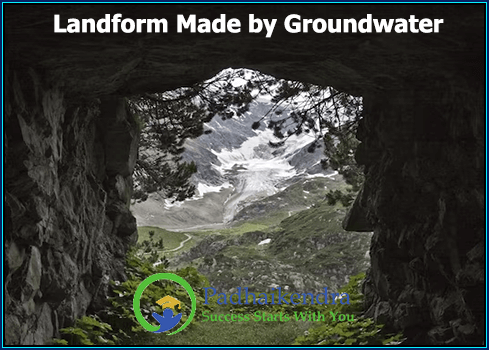Groundwater is an important natural resource that plays a significant role in shaping the Earth’s surface. Over time, groundwater can dissolve and erode rocks and sediment, creating a variety of landforms.
Here are some examples of landforms made by groundwater:
- Caves: Caves are underground chambers that are formed by the dissolution of limestone or other soluble rock by groundwater. As the groundwater flows through the rock, it dissolves the minerals and creates a network of underground channels and caverns. Some of the largest and most famous cave systems in the world include the Mammoth Cave System in the United States and the Sistema Sac Actun in Mexico.
- Sinkholes: Sinkholes are depressions in the Earth’s surface that are formed when the ground collapses into an underground cavity or void. This can occur when groundwater dissolves the rock or sediment beneath the surface, creating a hollow space. Sinkholes can vary in size from small depressions to large craters that swallow buildings and infrastructure. Some of the largest sinkholes in the world can be found in China and Guatemala.
- Karst Landscapes: Karst landscapes are characterized by their unique topography, which is formed by the dissolution of limestone or other soluble rock by groundwater. Karst landscapes can include a variety of features, such as sinkholes, caves, disappearing streams, and underground rivers. They are often found in regions with abundant rainfall, such as Southeast Asia and the Mediterranean.
- Travertine Terraces: Travertine terraces are formed when groundwater containing dissolved calcium carbonate is exposed to the air and the carbon dioxide in the atmosphere. This causes the calcium carbonate to precipitate out of the water and form a layer of limestone on the surface. Over time, the layers build up to create a series of terraces or pools. One of the most famous examples of travertine terraces is the Pamukkale in Turkey.
- Hot Springs and Geysers: Hot springs and geysers are formed when groundwater is heated by magma or other heat sources beneath the Earth’s surface. As the water heats up, it rises to the surface and can create a variety of features, such as hot springs, mud pots, and geysers. Some of the most famous examples of hot springs and geysers can be found in Yellowstone National Park in the United States.
Overall, landforms made by groundwater provide a fascinating glimpse into the complex and dynamic processes that shape the Earth’s surface. They are a reminder of the power of natural forces and the importance of protecting our environment for future generations.





